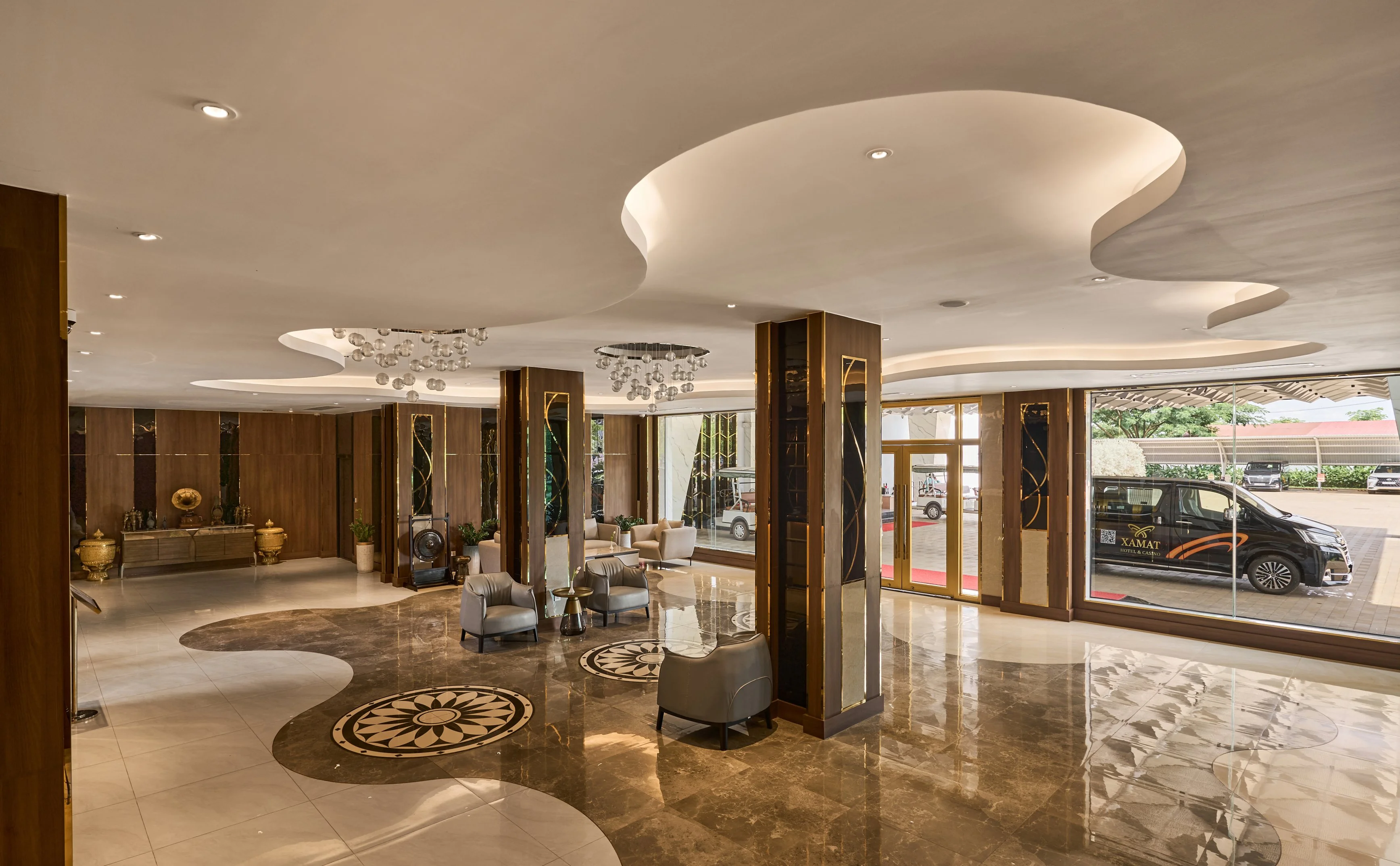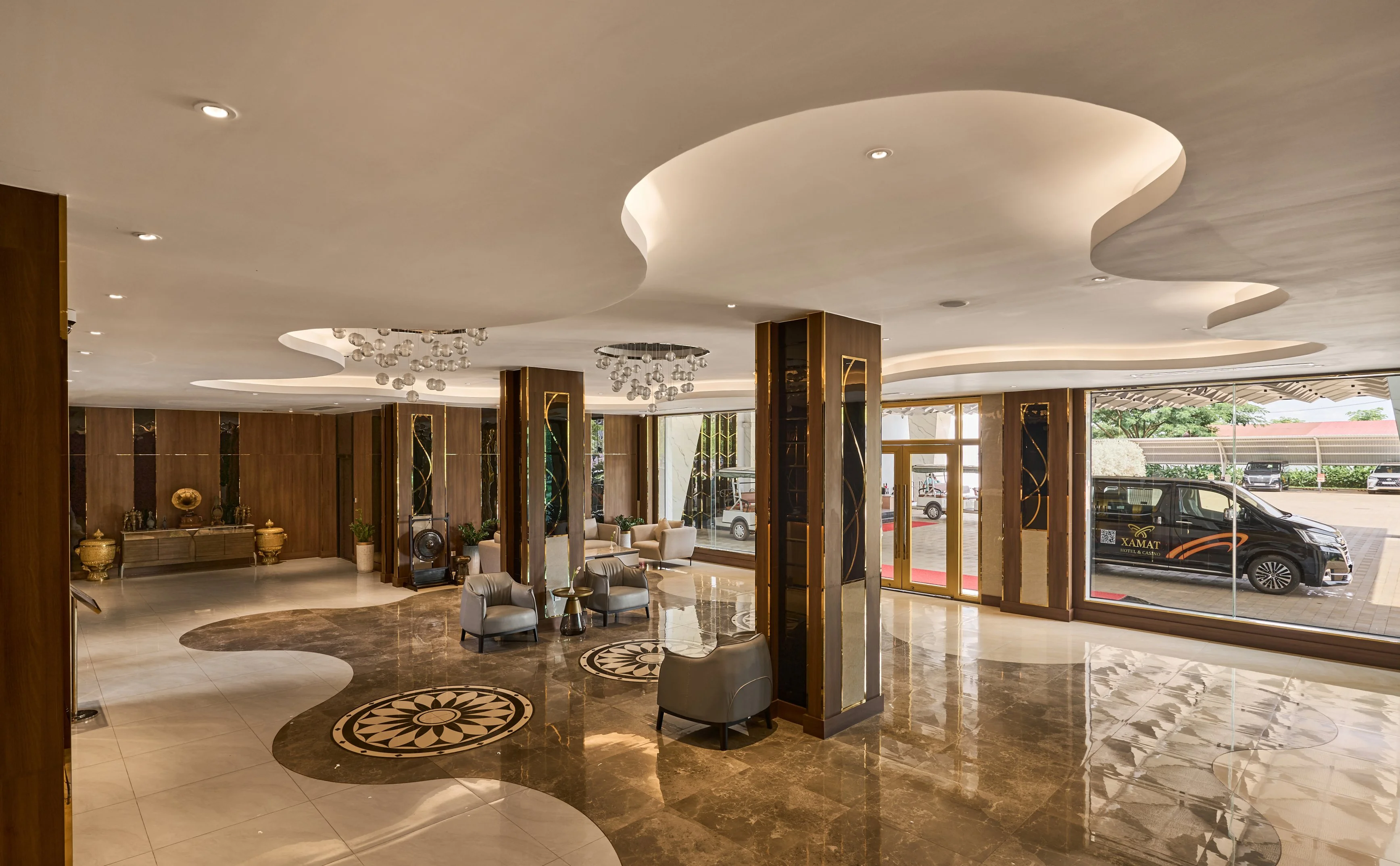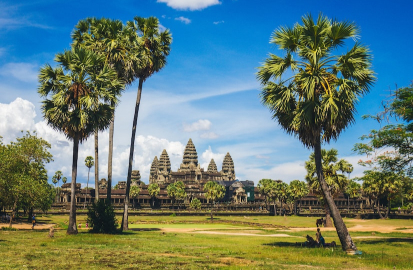Golden Empire – Part 2: Khmer at its Peak
The Khmer Empire reached its peak under Suryavarman II, who began building the capital city of Angkor. When I read about Khmer civilization, I felt like “aliens” were involved, just like when I read about Egyptian and South American civilizations. If you can’t go to Egypt, go to Cambodia to witness a unique ancient civilization.
Before the industrial age, no city on Earth could compare to the size of Angkor. The Khmer Empire owned the largest urban area on the planet from the 11th to the 13th centuries. People did not call Angkor a city but a megacity. Angkor's area was comparable to Los Angeles in the US and its population reached half a million people. It is completely normal that you could not finish cycling around Angkor for 3 days and 3 nights. This can be considered the greatest civilization that ever existed in Southeast Asia, both in terms of area and the legacy they left behind.
Being a tour guide in the Angkor area is not easy. The area of Angkor is 1000 km2, and the second place in the world is Tikal of the Maya civilization, which is only about 100 km2. The difference between the first and second places is such that you can see the extraordinary nature of the Khmer empire. Not to mention the intricate architectural system, to remember it all requires a huge amount of knowledge.
The Angkor area includes two notable monuments:
- Angkor Wat: Temple complex.
- Angkor Thom: New capital under Suryavarman VII.
First, we will mention Angkor Wat. Cambodians are really proud of their civilization, especially the largest religious monument in the world: Angkor Wat. This temple covers an area of 1.6 km2. In this Southeast Asian region, no man-made structure has reached the stature of Angkor Wat, even though it was built more than 900 years ago.
Angkor Wat was modeled after Meru in Indian mythology. Meru is a five-peaked mountain located at the center of the universe, where the three supreme gods Brahma (Creator), Vishnu (Protector), Shiva (Destroyer) and the demigods Deva reside. Khmer kings all wanted to create heaven on earth, because the more divine a king is, the more he is admired by his people. Interestingly, Angkor Wat later became a Buddhist temple after the Khmer people changed their religion. The walls of Angkor Wat are like a mythological book, engraved with stories from both Hinduism and Buddhism.
To build Angkor Wat, workers had to transport stones from Kulen Mountain. If Vietnam has Tan Vien Mountain, Kulen is equally sacred to the Khmer people. The amount of stones used to build Angkor Wat was up to 5 million tons, more than all the Egyptian pyramids combined. Each stone block weighed up to 1.5 tons, so they moved them by boat, crossing dozens of kilometers of canals to the construction site.
Before that, King Suryavarman I went to the top of Kulen Mountain to block the water. He ordered the creation of thousands of evenly spaced Lingas under the water. The Hindu goddesses were also carved very elaborately. If Angkor Wat took 37 years to complete, the Thousand Linga Stream took 1 century. The Khmer people believe that if children are bathed in this water, they will grow up very quickly and be healthy. Any comparison is lame. However, the most famous areas in Southeast Asia today such as the Hue Imperial Citadel (Vietnam), Borobudur (Indo), Bagan (Myanmar), Wat Phra Kaew (Thailand), Phra That Luang (Laos), etc., are also difficult to reach the stature of Angkor Wat. The project that currently carries more than 50% of Cambodia's tourism took about 35 years to complete, with 300,000 workers and thousands of elephants.
Astronomy had a great influence on the architecture of Angkor Wat. On the main temple there was an observatory for the Sun and Moon. The outer axis of the wall around the complex was exactly equal to the solar year, and its circumference was equal to the lunar year, measured in days. However, Angkor Wat faced west. This was very unusual because it contradicted Hindu culture. West was the direction of death. Historians are still arguing about this, so I dare not conclude.
"The temple [Angkor Wat] was surrounded by a moat, and could only be reached by a single bridge, flanked by towering stone tigers, which made visitors' hearts pound and their legs tremble."
If Angkor Wat was built to honor Vishnu, Banteay Srei was used to worship Shiva. Banteay Srei is not big but special. It is the most feminine temple and only women are allowed inside. Banteay Srei is feminine from the outside, because you will feel the whole architecture as if covered in a layer of lipstick. That is because it is built with red sandstone, charming like a jewel to decorate the already splendid capital of Angkor.
However, the most impressive thing that you cannot miss is the Koh Ker pyramid. You have to spend a whole day here because it is not part of the temple complex. Koh Ker was the ancient capital for a short time before returning to Angkor and the remarkable thing here is the 40m high pyramid.
Pyramids in civilizations such as Egypt and Maya are too famous, but Koh Ker is unique in Indochina. This tower is built of volcanic rock and sandstone, there is only one bridge leading to the top but there is absolutely no entrance. If you want to try your luck, you can go around to find an underground door for example. No one knows what this pyramid is for, it could be a tomb, a place to worship, sacrifice or even gather the energy of heaven and earth for the Khmer king.
Although I had heard about the grandeur of Angkor, when I saw it with my own eyes, I was still overwhelmed. The temple complex located in the ancient capital is an extraordinary architecture that cannot be described in writing, because it is unlike any other construction in the world. The Angkor area is filled with towers, covered with exquisite decorations and embellished with all the sophistication that humans can imagine.
It was not simple that when the French learned of the existence of this giant temple complex, they were as fascinated by it as the day they came to the land of the Pharaohs. The French, with their curious nature, discovered a mysterious and massive civilization hidden in the deep jungle, perhaps a huge Eureka moment.
Angkor has the appearance of the legendary golden city of El Dorado that the Spanish had dug up the Americas to find. Suppose Angkor Wat still had its original gold plating and color, how beautiful would it be? The Golden City of El Dorado may not be real, but Angkor is 100% real.
With what I have told you above, Angkor was certainly a magnificent place in its heyday. The civilization of the Khmer empire was comparable to what Western civilization left to us, and it was a sad contrast to the bloody and devastating history of this country later on.




